37 Sea Turtle Hatchlings Released Off East Coast of Florida
Clearwater Marine Aquarium released 37 rescued loggerhead sea turtle hatchlings off the east coast of Florida on Nov. 9, 2018, after rescue and rehabilitation at CMA.
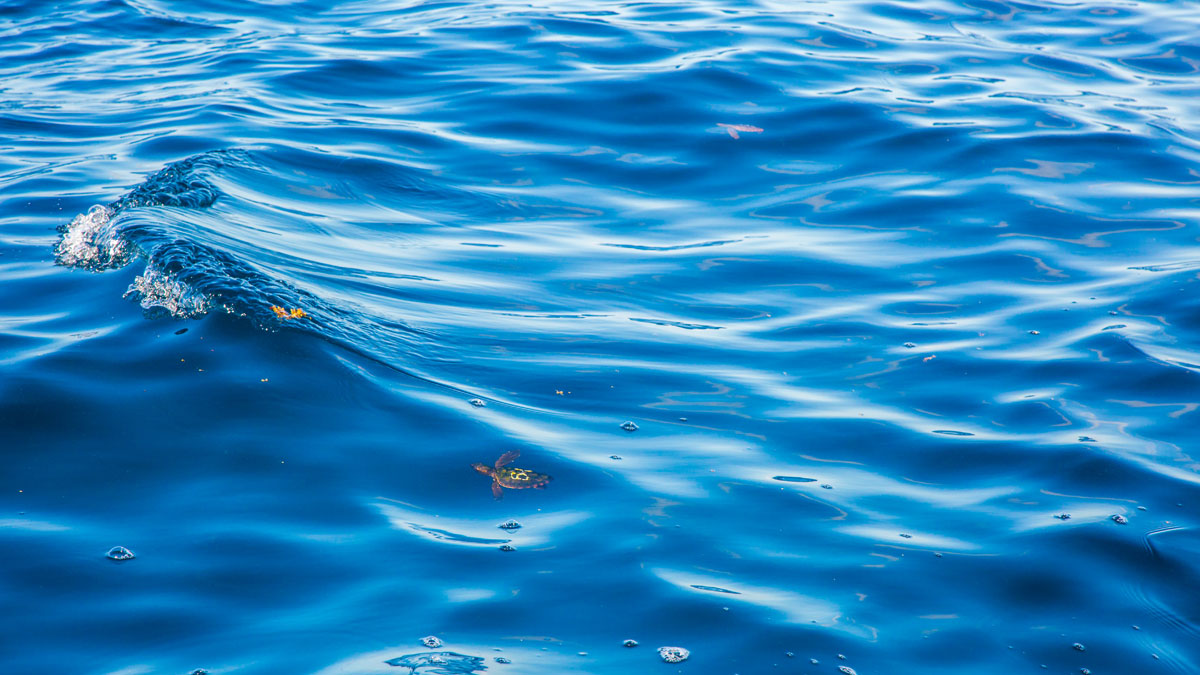
The baby sea turtles were all rescued after failing to make it to the ocean after they hatched from their nests. Some, like the “Pool Boys,” became disoriented after emerging from their nest and crawled away from the water, ending up in pools, parking lots and other dangerous areas. CMA rescued and rehabilitated the “Pool Boys” after they were found in a pool filter in Indian Shores, Florida. The other sea turtle hatchlings were rescued in Northwest Florida for various reasons and transferred to CMA for final rehabilitation and release.
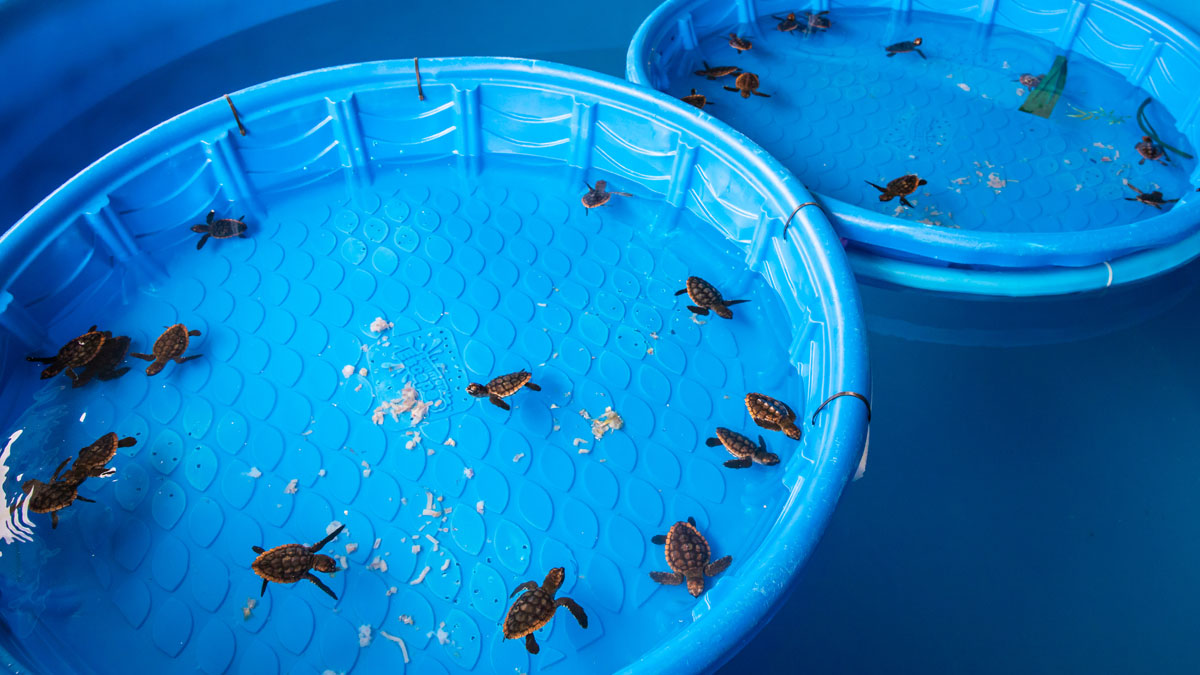
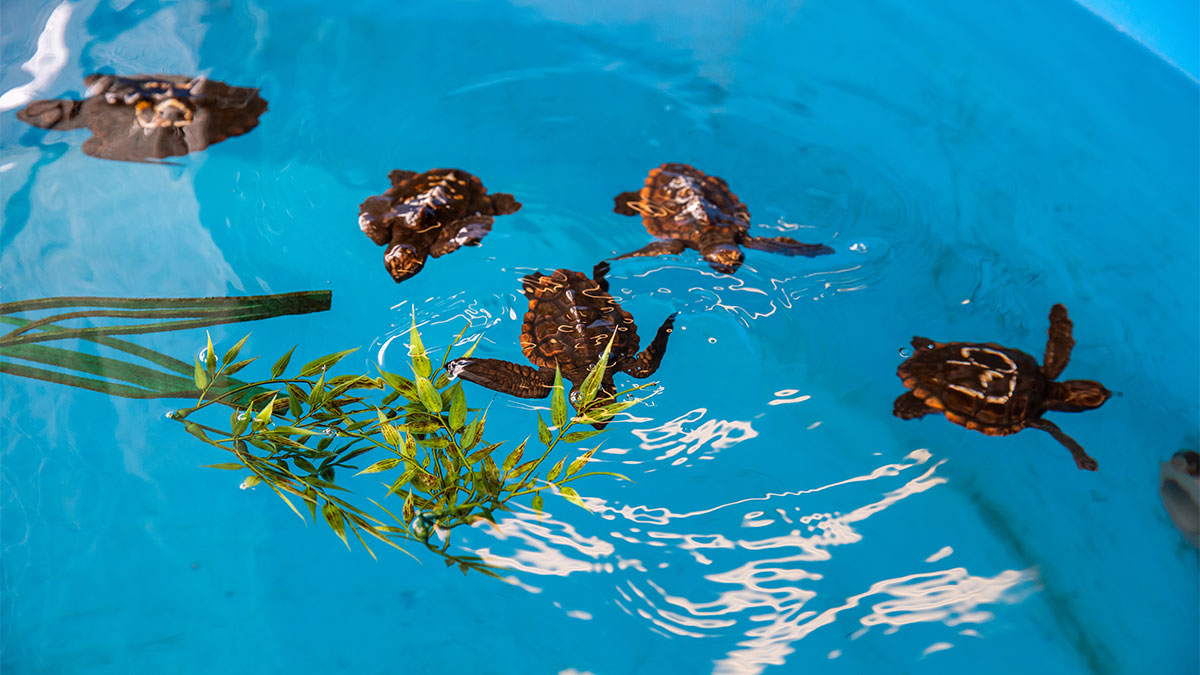
Searching for the Sargassum Seaweed Line
Unable to locate an appropriate seaweed line in the Gulf of Mexico for release, CMA located a healthy floating sargassum seaweed line to release the hatchlings six miles off Palm Beach County on the east coast of Florida. After hatching and emerging from their nests at night, sea turtle hatchlings crawl to the water and fight to swim to the weed line. The sargassum seaweed provides camouflage and plenty of food for them to safely grow. However, it is estimated only 1 in 1,000 sea turtle hatchlings make it to adulthood due to predators and other threats. Many sea turtle hatchlings become entangled in garbage left on the beach, fall in holes dug by beachgoers, become disorientated from coastal property lighting, and more.
Hatchlings have a reserve of energy from the yolk sac inside the egg they use to reach the water and swim to the safety of the sargassum — a journey that can take days! When they get disoriented or caught in obstacles on the beach, they have spent most of their energy and by the time they are rescued they are no longer strong enough to swim out to the weed line on their own. To ensure they make it to the proper habitat safely, we take them there on a boat!
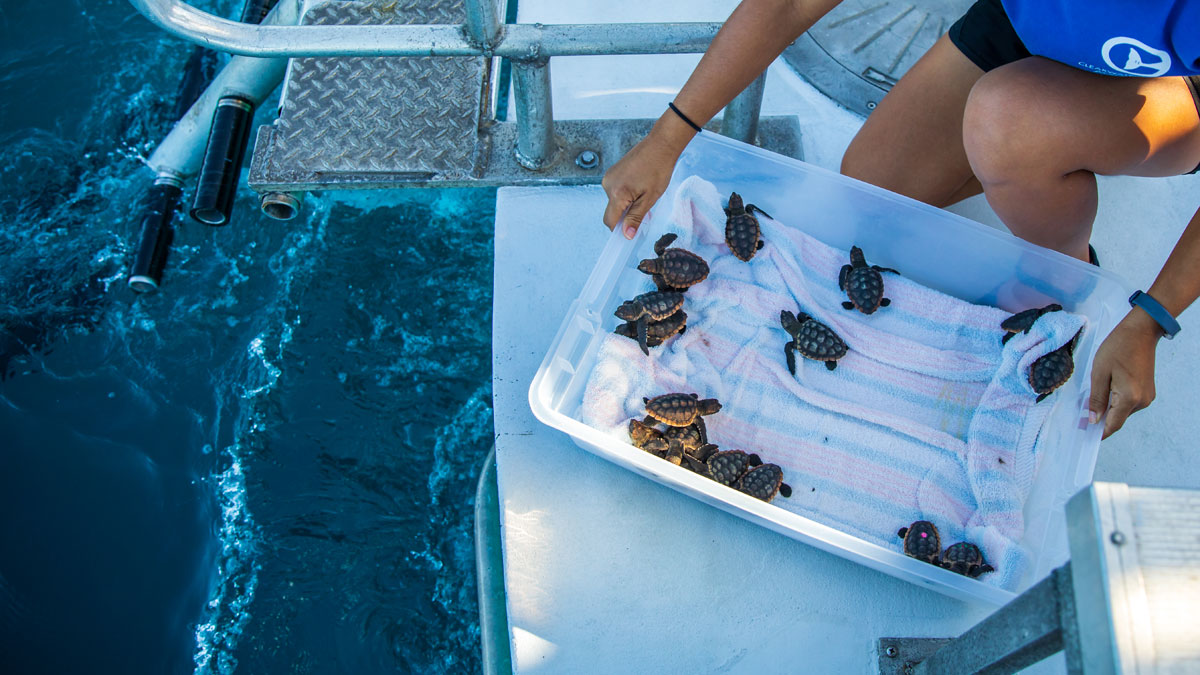
“The loggerhead sea turtle is an endangered species, and have the odds stacked against them for survival,” says David Yates, CEO of Clearwater Marine Aquarium. “That is why our nesting conservation and rescue/rehab work with these sea turtles is essential to the species’ existence.”
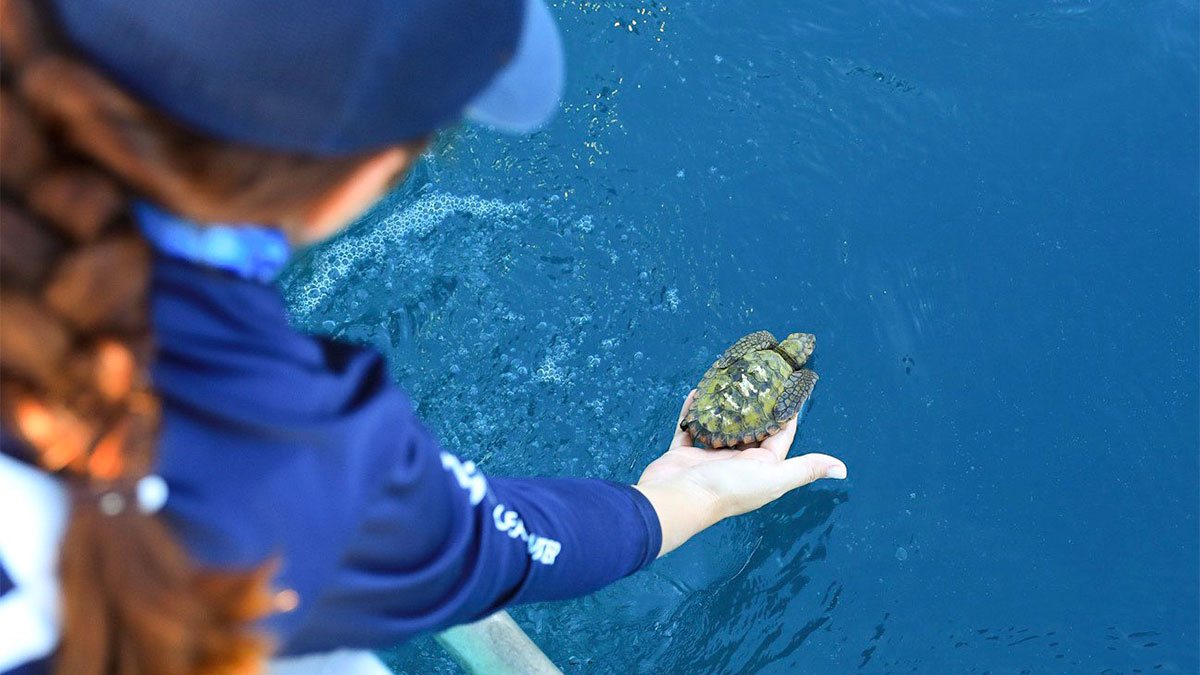
CMA has rehabilitated and released more than 100 sea turtles so far this year, including the 37 rescued hatchlings.
You can help protect sea turtles, too
Beachgoers can help protect sea turtles by picking up trash and other objects left on the beach. Filling any holes in the sand and knocking down sand castles will give them a clear path back to the water. And avoiding the use of any lights after dark when at or near the beach will prevent confusing a nesting sea turtle or baby hatchling.
Learn more about sea turtle nesting.
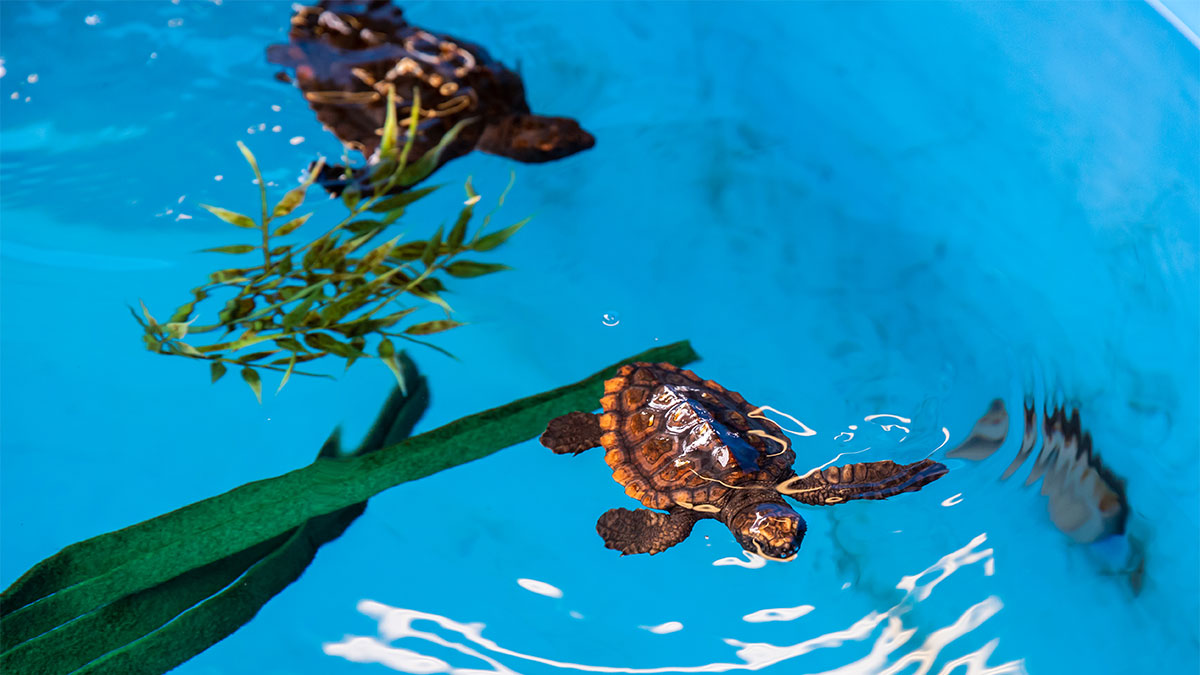
All marine turtle footage taken in Florida was obtained with the approval of the U.S. Fish and Wildlife Service and the Florida Fish and Wildlife Conservation Commission (FWC) under conditions not harmful to marine turtles. Footage was acquired while conducting authorized conservation activities pursuant to FWC MTP-18-172.